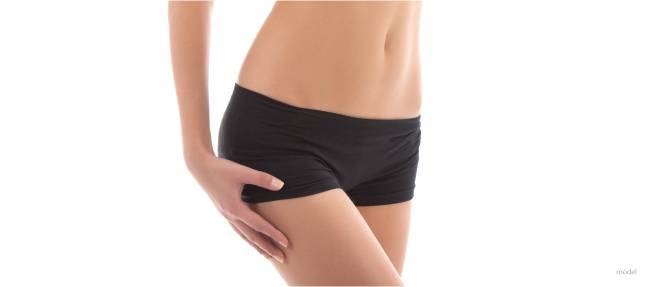The Evolution of Liposuction Techniques and Technology

Liposuction procedures have undergone several major advances since Italian and French surgeons first used suction to remove fat in 1974. Throughout the course of many advancements in both technology and technique the underlying principle of liposuction has always remained the same: to remove fat through a cannula (hollow tube) with the help of an aspirator (suction device) to improve body contours. However, today’s liposuction techniques and technologies have made liposuction surgery yield drastically better results with relatively low risks.
Early Liposuction Techniques
Initially liposuction surgery was performed under general anesthesia with large bore cannulas. Unfortunately, these early procedures were marred by irregularities, asymmetry, blood loss, and sometimes infection.
In 1983, Dr. Yves-Gerar llouz introduced the “llouz Method”, a technique that used suction-assisted liposuction after infusing fluid into the tissue. The technique proved to yield a low morbidity rate and reproducible good results.
Surgeon Pierre Fournier continued these advancements by altering the incision, using lidocaine as a local anesthetic, and adding the use of compression devices after the operation.
Tumescent Liposuction
A huge advancement in liposuction came in 1985 from Dr. Jeffrey A. Klein, a dermatologist from Southern California. His tumescent technique (Tumescent Liposuction) allowed large areas of liposuction to be done with local anesthesia (known as tumescent anesthesia), making liposuction surgery safer and more effective. Prior to Dr. Klein’s technique liposuction surgeries had to be done under general anesthesia, had long recovery time, and patients experienced significant blood loss during the procedure.
Tumescent liposuction has become the gold standard in liposuction due to several improvements over previous techniques:
- Tumescent liposuction is better tolerated by patients and carries a much lower risk of complications.
- Patients experience less pain and shorter down time post-operatively.
- Tumescent liposuction has less blood loss and less bruising.
- Tumescent liposuction is generally less expensive due to the reduced cost of anesthesia.
- Tumescent liposuction allows surgeons to contour the body to any desirable angle during the procedure making a better procedure.
Advancements in Instrumentation and Technology
Along with improving liposuction techniques, plastic surgeons from all over the world have sought ways to improve technology and instruments utilized during liposuction surgery. This has led to the emergence of numerous devices that may be used to aid surgeons in the procedure:
Cannula: Continuous innovation has made today’s cannula smaller and less traumatic than earlier versions leading to smoother results and minimal scars.
Ultrasound Assisted Liposuction (UAL): This technique uses a specialized cannula that emits ultrasound vibrations. These vibrations liquefy the fat making it easier to be removed via suction. The technique however, has numerous potential complications including skin necrosis and seromas (pockets of yellow fluid that need to be drained with a needle).
Power Assisted Liposuction (PAL): Power assisted devices utilize a cannula that mechanically oscillates, negating the need for manual back-and-forth movements from the surgeon. Power assisted liposuction can be helpful in tissue that is more fibrotic such as in areas of scars. Power assisted devices also decrease the fatigue on the part of the surgeon which could lead to better results.
Laser Assisted Liposuction (SmartLipo): Laser assisted liposuction utilizes a small cannula with a laser fibre. The fibre delivers laser energy into the fat layer, causing fat cells to be melted, making it easier to remove via suction. The distinct advantage of laser assisted liposuction is the ability of the laser to tighten skin. The wavelengths of the laser heat the tissue to a desired temperature in order to increase new collagen production leading to thicker skin and tighter skin. The newest SmartLipo device has higher energies for increased results as well as temperature regulation to ensure safety.
My Preference
I utilize a combination of tumescent liposuction with SmartLipo for a majority of my liposuction patients and see excellent results. However, the best liposuction method for you will depend on many factors such as your body type, specific goals, and medical history. Contact us today for a free consultation.

Great piece Dr. Coleman, thanks for sharing!